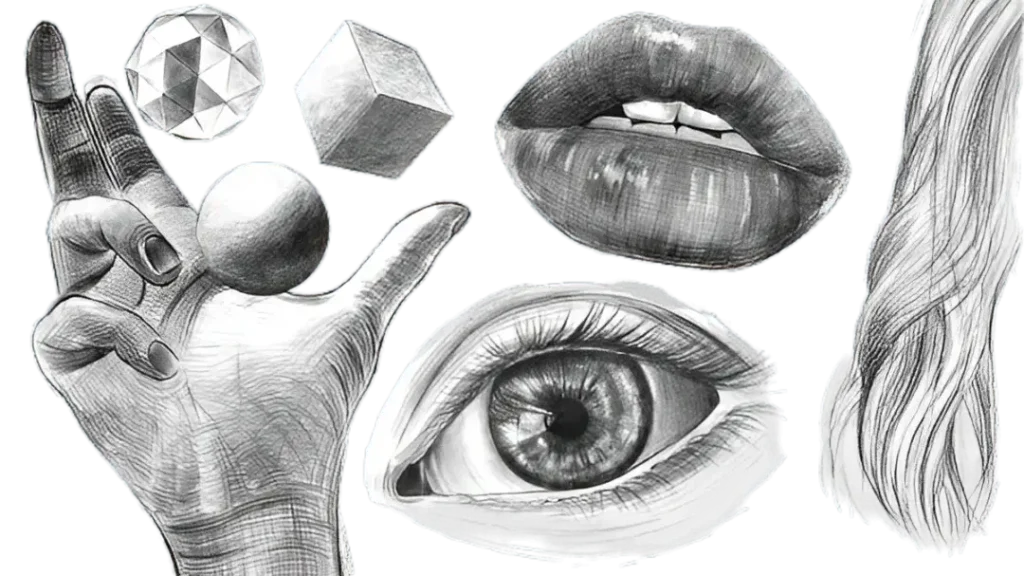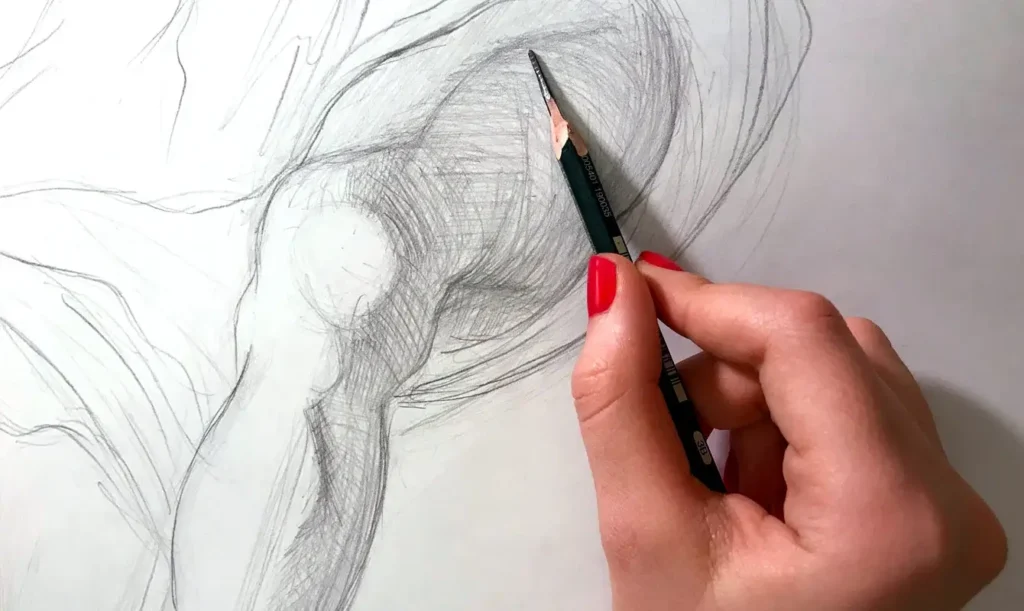Sketching is an art form that unlocks your creativity and helps you capture the world around you. Whether you’re just starting or looking to refine your skills, mastering basic techniques is crucial. In this guide, we’ll explore ten essential sketching techniques designed for beginners. From understanding pencil pressure to experimenting with textures, these techniques will lay a solid foundation for your artistic journey. Let’s dive into these fundamental methods to help you create stunning sketches and develop your unique style.
1. Understanding Pencil Pressure
Mastering pencil pressure is the first step in sketching. By varying the pressure you apply to your pencil, you can create a range of line thicknesses and intensities. Light pressure yields delicate, fine lines, while heavy pressure produces darker, more defined marks. Practice adjusting your pressure to see how it affects your lines and shading. This skill is fundamental in creating depth and dimension in your sketches.
2. Mastering Line Variety
Line variety is crucial for adding interest and realism to your sketches. Experiment with different types of lines, including straight, curved, thick, and thin. Each line type can convey different emotions and characteristics. For instance, jagged lines might represent rough textures, while smooth, flowing lines can indicate softness. Incorporate a mix of line types to enhance the dynamism of your drawings.

3. Practicing Shading Techniques
Shading adds depth and dimension to your sketches. Start with basic shading techniques such as hatching, cross-hatching, and stippling. Hatching involves drawing parallel lines, while cross-hatching involves layering perpendicular lines. Stippling uses dots to create shading. Practice these techniques to understand how light and shadow affect objects. Mastering shading will make your sketches appear more three-dimensional.
4. Exploring Texture Creation
Texture gives your sketches a lifelike quality. Experiment with creating different textures using various techniques. For example, you can create a rough texture by applying quick, jagged lines or a smooth texture by using gentle, overlapping strokes. Observe textures in real life and try to replicate them in your sketches. This practice will improve your ability to depict various surfaces and materials.

5. Using the Grid Method
The grid method is a useful technique for achieving accurate proportions in your sketches. By overlaying a grid on your reference image and your sketch paper, you can transfer details more accurately. This method helps break down complex images into manageable sections, ensuring that proportions and perspectives are correct. It’s an excellent tool for beginners to develop their observational skills.
6. Developing Proportions and Perspective
Understanding proportions and perspective is essential for realistic sketching. Practice drawing basic shapes and objects with correct proportions. Study how objects appear smaller as they recede into the distance and how parallel lines converge at a vanishing point. Incorporate these principles into your sketches to create a sense of depth and realism.
7. Capturing Movement and Gesture
Gesture drawing focuses on capturing the essence of movement and action. It involves making quick, fluid sketches to convey the dynamic nature of a subject. Practice drawing people or animals in motion, focusing on the overall movement rather than details. Gesture drawing helps improve your ability to capture life and energy in your sketches.
8. Experimenting with Different Materials
Exploring different sketching materials can enhance your creativity and skill. Experiment with various types of pencils, pens, and paper to see how they affect your sketches. For instance, charcoal can create rich, dark lines, while colored pencils add vibrant hues. Trying out different materials will help you find what works best for your style.
9. Incorporating Negative Space
Negative space refers to the empty areas around and between subjects in your sketch. Paying attention to negative space can help you achieve more balanced and accurate compositions. Practice drawing the shapes of the negative space to improve your ability to see and capture proportions and relationships between objects.
10. Tips for Regular Practice
Consistent practice is key to improving your sketching skills. Set aside time each day to draw, experiment with new techniques, and reflect on your progress. Keep a sketchbook to document your work and track your development. Regular practice will help you refine your techniques and build confidence in your abilities.
Mastering these ten essential sketching techniques will provide a solid foundation for your artistic journey. By practicing pencil pressure, line variety, shading, and other methods, you’ll enhance your skills and develop a unique sketching style. Remember, regular practice and experimentation are crucial for growth. Keep sketching, stay inspired, and enjoy the process of creating art.
